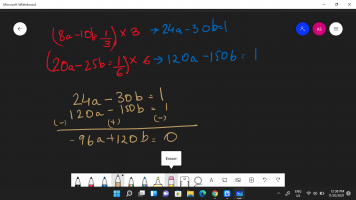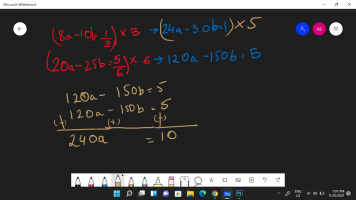dollyayesha2345
Junior Member
- Joined
- Oct 28, 2021
- Messages
- 57
Show that the equations [math]8a-10b=\frac{1}{3}[/math] and [math]20a-25b=\frac{5}{6}[/math] have many solutions.
Please tell me how to even begin with and I'll solve and share my inputs
Please tell me how to even begin with and I'll solve and share my inputs


